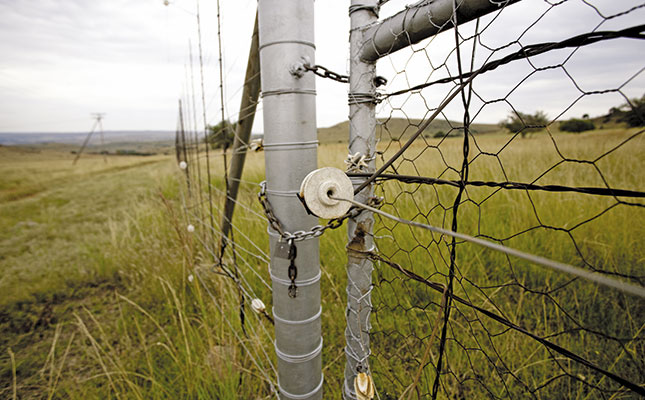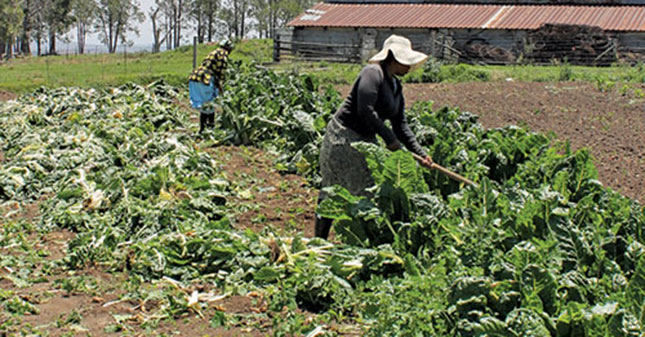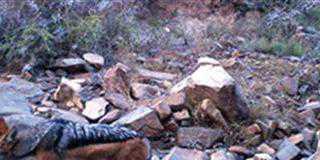
Photo: Gerhard Uys
What are the reasons and contributing factors to farm violence and murders in South Africa?
This is difficult to determine because a lot of factors contribute to this. When analysing serious and violent crimes, we need to determine the reasons people commit them. Crime analysis experience has, however, shown that the generators of crime are mostly found in the socio-economic environment where criminals live.
READ:Farmer’s Weekly Nampo Tour 2017
Media coverage, perceptions of farmers, articles by criminal experts/academics and conversations with some investigative officers this year showed that farm crimes were being driven by ‘greed’. This stems from the perception that farmers have money, firearms, cellphones and vehicles on their premises, and that criminals’ motive could mainly be associated with robbery.
A recent analysis by FSA (Free State Agriculture’s) on serious and violent incidents on farms this year indicates that in frequency of importance, criminals target items such as money, firearms, vehicles and cellphones. The questions, however, remain whether the brutality associated with these robberies could also be found in the majority of similar incidents in towns and cities, and whether these are restricted to farming communities.
There are claims that the government has managed the issue of violence on farms poorly. Do you agree? And if so, how do you think it should have managed this issue?
All citizens have the responsibility to keep themselves and their families safe. However, government and the police have a responsibility to protect citizens from criminal exploitation, and they get paid to do so. The shift in policing since the end of the 1990s focuses primarily on crime prevention and recently, on sector policing. This means that a collective community effort should be instituted to pro-actively combat crime through various forums with stakeholders and the police, of which not all are functioning optimally.
There are, however, challenges in the current rural safety strategy that need to be addressed by police, especially in terms of vehicles and manpower to improve their service delivery in the rural areas where farming communities are negatively affected.
Are farm violence and murders aimed at white farmers only?
No, they are not. In recent media releases, FSA and AfriForum have both indicated that farm workers are increasingly being targeted by criminals. This is evident in all provinces. Of the 15 murders committed on agricultural land in 2015 thus far, 10 were farm workers. In some areas, black foremen were also participating in white/blue light patrols as part of the rural safety strategy to protect farms and their families from criminal exploitation. FSA indicated in the recent safety manual that farmers needed to accommodate workers in their contingency plans with regard to training and simulation exercises to promote their safety.
Tell us more about the history of farm attacks and murders in South Africa.
The first farm murder in South Africa apparently occurred in the late 1960s. The questions are whether there is a consistent increase in farm attacks and murders over the past decade or years in the country and in provinces, and whether farmers as a collective are targeted by groups of criminals or opportunistic criminals. The figures of agricultural unions such as TAU SA, FSA and AfriForum differ from those of the police. The perception is that farm murders, attacks and serious and violent crimes in the province and the country are on the increase and that mitigating measures are failing to address this.
The Commando system was done away with after 1994. What was the effect of disbanding the commandos, and has any alternative system been put in place?
The Commando system was systematically abolished since 2003, more so towards the middle of 2011, and replaced with the rural safety strategy that was a negotiated plan by organised agriculture and the police. Under this system, many farmers were involved in ‘home and hearth’ protection as well as area-bound reaction forces as part of that collective.
The strategy primarily focuses on sector policing whereby towns are divided into sectors with monthly meetings between farmers and the police, joint regular patrols by farmers and the police, and simulation exercises and farm visits conducted by the police in all areas. The plan places the onus on both farmers and police to engage, cooperate and build partnerships to ensure the safety of farmers, their families and workers.
How can farmers, farm workers and landowners be involved in the fight against rural crime?
Firstly, farmers need to become part of the rural safety plan in their respective areas through local agricultural unions. This way, they will have access to necessary information being disseminated at all levels by police and farmers with regard to criminal activities. Secondly, farmers need to assess the security of their residences and environment to ensure they have adequate security measures and contingency plans in place.
Such plans should be simulated with workers and their families on a regular basis. Thirdly, farmers should have a good working relationship with their workers, who also need to form part of their contingency plans. They should be informed of the crucial role they play in the sharing of information, observations and how to react should something go wrong.
How effective are law enforcement agencies in combating rural and farm violence?
The SAPS is under tremendous pressure to fulfil its 4 Tier responsibilities as indicated in the SAPS Act.The service is also dependent on its allocated budget to perform these functions, especially in terms of a pro-active crime-combating approach, the investigation of crime and crime intelligence. The increase and/or decrease in crime statistics should not be the only measuring tool to assess police performance because many problems arise from this – the under-reporting rate of crime as well as the manipulation and interpretation of statistics. It seems, however, that the lack of trustworthy relationships between the police and farmers in rural areas is hampering the effective combating of crime.
Problematic issues must be identified and restored in order to move forward. Crime has decreased in areas where a good working relationship exists.
What would be an ideal relationship between these agencies and agricultural organisations?
An open relationship concerning the dissemination of information and the extent of all crimes on agricultural land should be the starting point. You cannot implement and devise any strategy to combat crime if you don’t know how big the problem affecting rural areas is.
Therefore, an in-depth analysis of all crimes should take place to enable operations/patrols to be conducted to address these according to distinctive crime patterns and trends. Interactive engagement between FSA by means of coordinating structures and the dissemination of information through effective communication in these forums will enhance service delivery by the police.
What are the long-term economic, social and emotional impact of these crimes?
The long-term economic impact of all crimes, especially property-related on agricultural land, is devastating. It prevents many farmers from being sustainable because criminals continually target their stock, houses and lands. This has an adverse effect on food security in the country because the number of commercial farmers decreases every year. The emotional impact also plays a role, with some farmers leaving the agricultural industry for fear of being attacked. It also prohibits upcoming farmers from joining the sector.
What are the worst- and best-case scenarios pertaining to farm and rural crimes in 10 years?
The worst-case scenario is that organised crime syndicates, who are already in the sector, especially focusing on property-related crimes, will prosper and halve the agricultural sector in terms of existing commercial farmers. This will affect food security severely. The best-case scenario will be for all stakeholders to be involved in safeguarding the farming communities from criminal exploitation as well as violent crimes. This will enable the agricultural sector to grow, allowing it to create jobs, feed the nation and improve the economy.
Phone Dr Jane Buys and Gernie Botha on 051 444 4609.
This article was originally published in the 18 September 2015 issue of Farmer’s Weekly.













